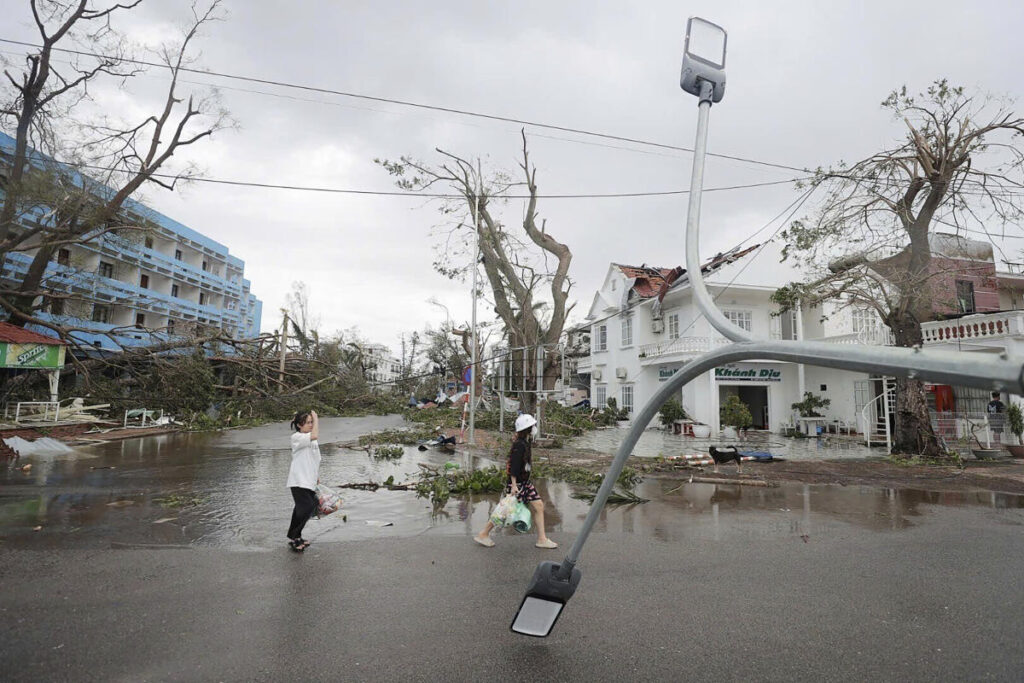People walk past a broken lamppost after Typhoon Yagi hit Hai Phong city, northern Vietnam, Sunday, Sept. 8, 2024. Credit – Minh Quyet—AP
HANOI, Vietnam — At least 14 people have been killed and 176 others injured in Vietnam after Typhoon Yagi slammed into the country’s north, state media reported Sunday, as officials warned of heavy rains despite its weakening strength.
Described by Vietnamese officials as one of the most powerful typhoons to hit the region in the past decade, Yagi left more than 3 million people without electricity in northern Vietnam. It also damaged vital agricultural land, nearly 116,192 hectares (270,000 acres) of land grown mainly in rice and fruit. Hundreds of flights were canceled after four airports were closed.
The typhoon made landfall Saturday afternoon in the northern coastal provinces of Quang Ninh and Haiphong with winds of up to 149 kilometers per hour (92 miles per hour). The typhoon raged for about 15 hours before gradually weakening to a tropical depression early Sunday morning. Vietnam’s Meteorological Agency forecast heavy rains in the northern and central provinces and warned of flooding in low-lying areas, flash floods in streams and landslides on steep slopes.
Municipal workers, along with the army and police, were busy in the capital Hanoi, clearing up uprooted trees, toppling billboards, cleaning up fallen electricity poles and clearing roofs that had been washed away. At the same time, they were surveying damaged buildings.
Yagi was still a storm when it blew into the South China Sea from the northwestern Philippines on Wednesday, killing at least 20 people and leaving 26 missing, mainly through landslides and widespread flooding in the Archipelago nation. It then moved toward China, killing three people and injuring nearly 100 others, before making landfall in Vietnam.
Storms like Typhoon Yagi “have become more powerful due to climate change, mainly because warmer ocean waters provide more energy to power the storms, leading to higher wind speeds and heavier rainfall,” said Benjamin Horton, director of the Earth Observatory of Singapore.
Contact Us via letters@time.com.

